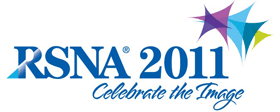
Abstract Archives of the RSNA, 2011
LL-INE1187-WEA
Quantitative Dynamic Contrast-enhanced MRI Analysis Tool
Education Exhibits
Presented on November 30, 2011
Kyunghyun Sung PhD, Presenter: Nothing to Disclose
Bruce L. Daniel MD, Abstract Co-Author: Research grant, General Electric Company
Daniel L. Rubin MD, Abstract Co-Author: Grant, General Electric Company
Brian Hargreaves, Abstract Co-Author: Nothing to Disclose
Analyzing dynamic contrast enhanced (DCE) MRI is complex, and our goal is to develop a software tool to facilitate quantitative analysis of DCE MRI studies. This analysis tool, available as a plug-in to OsiriX (open-source medical image processing software), is fully customizable and simple to use.
The DCE analysis software, called DCE Tool, provides an ability to monitor the kinetic behavior of a contrast agent, and to analyze signal dynamics on user-defined regions or a per-pixel basis. The changes in contrast agent concentration are linked to the signal intensity changes and the conversion between two requires a measurement of baseline T1 relaxation. The DCE Tool includes a calculation of the baseline T1 using variable flip angles with and without flip angle correction.
The DCE Tool allows monitoring three types of signal dynamics: signal intensity, relative enhancement (normalized by baseline signal intensity) and contrast agent concentration, and drawing the corresponding time courses averaged over regions of interest. We also developed to generate pixel-by-pixel semi-quantitative maps such as initial slope, area under the curve, and time to peak. All the analyzed values and maps can be stored as various formats such as PDF, TXT, and DICOM.
OsiriX is an image display and visualization software and fully supports a complete plug-in architecture. Any plug-in developments under this architecture share all the advanced features of OsiriX, which provide convenient and user-friendly interface. The DCE Tool offers many features to analyze DCE MRI data and has potential to further extend extracting full physiological parameters such as Ktrans, Kep, and EES when AIF is properly measured.
We have developed an analysis tool to easily generate semi-quantitative features of DCE MRI. The tool is very flexible and intuitive to use, and can easily include more features.
http://media.rsna.org/media/abstract/2011/11015719/11015719_kd31.jpg
Sung, K,
Daniel, B,
Rubin, D,
Hargreaves, B,
Quantitative Dynamic Contrast-enhanced MRI Analysis Tool. Radiological Society of North America 2011 Scientific Assembly and Annual Meeting, November 26 - December 2, 2011 ,Chicago IL.
http://archive.rsna.org/2011/11015719.html

